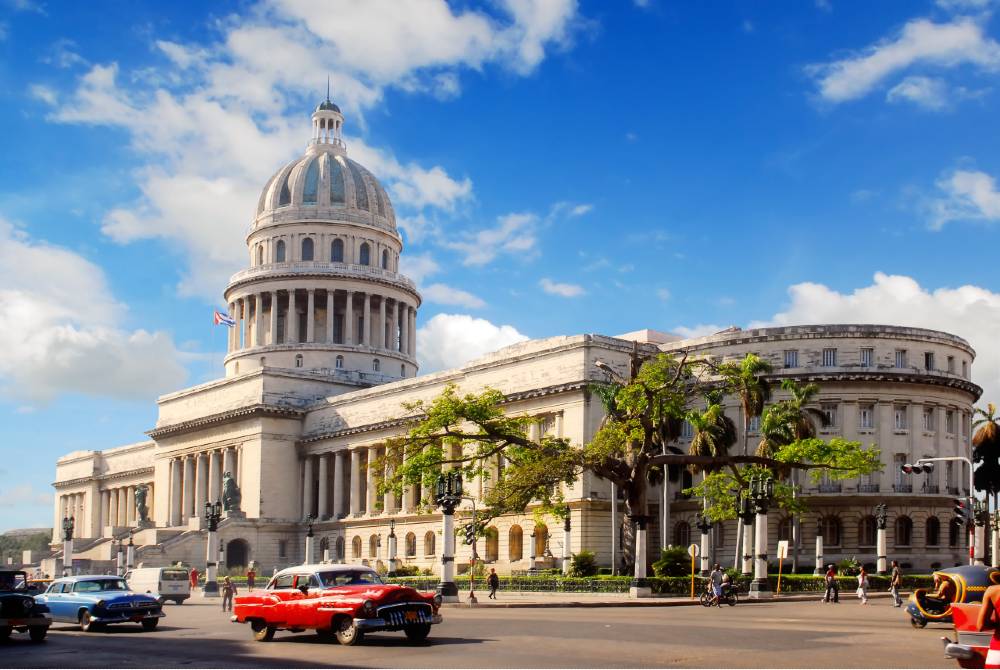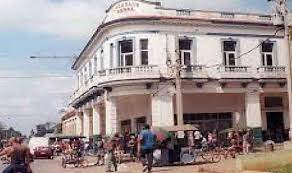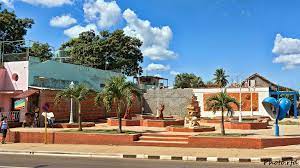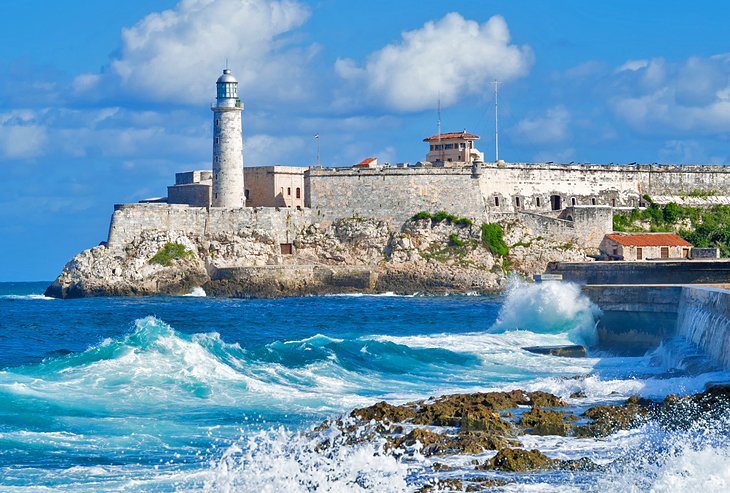ARTEMISA, CUBA, CONOCIDA COMO “JARDÍN DE CUBA” Y “VILLA ROJA”. FOTOS.
Artemisa es un municipio y ciudad de Cuba, según una ley aprobada por la Asamblea Nacional cubana en agosto de 2010, Artemisa se convirtió en la ciudad capital de la recién formada Provincia de Artemisa, que comprende ocho municipios de la antigua Provincia de La Habana y tres de Pinar del Río. Tiene una superficie de 642,0 kilómetros cuadrados y una población de más de 85.000 habitantes (2017).
Por sus cultivos de café en el pasado y el bucólico paisaje local, ha recibido el sobrenombre de “Jardín de Cuba” (Jardín de Cuba) y también es conocida como la “Villa Roja” (Pueblo Rojo) por el color de sus suelos.
El municipio alberga la Universidad de Artemisa, que forma profesionales en ciencias agropecuarias, profesores de educación media y superior, y ciencias empresariales, entre otros. También está la Facultad de Ciencias Médicas de Artemisa, que forma médicos, odontólogos y otros profesionales de la salud.
HISTORIA
La villa fue fundada en 1818. Surgió a raíz de un incendio ocurrido el 25 de abril de 1802 en los barrios Jesús María y Guadalupe de la ciudad de La Habana, que dejó sin hogar a muchas familias y presionó al Real Consulado de Agricultura, Industria. y Comercio para aprobar la creación de poblaciones en áreas extramuros. En 1818, gracias a la donación de don Francisco de Arango y Peñalver, se inició la construcción de la iglesia, la cual fue inaugurada el 22 de diciembre de 1825. El origen del nombre de Artemisa es incierto. Se ha argumentado que tiene su origen en la diosa griega Artemisa (Diana, en la versión romana) o que hace referencia al nombre de Ambrosía en español, Artemisia (Ambrosia artemisifolia), abundante en la época.
El municipio se funda el 9 de junio de 1878, mediante real cédula en la que se asigna como cabecera a esta ciudad. El 1 de enero de 1879 se celebra la primera reunión del Ayuntamiento.
Aunque Artemisa no participó en la primera Guerra de Liberación contra España en 1868-78 (Guerra de Los Diez Años), ya que no llegó al occidente del país, sí lo hizo en una de las 95 en las que participaron más de 200 niños de esa región se unió a las fuerzas mambisas, de las cuales 135 sobrevivientes fueron dados de baja. Entre ellos destacan importantes figuras como Manuel Valdés (primer mártir artemiseño, mensajero de las fuerzas mambisas), el coronel Federico Núñez, el general Alberto Nodarse Bacallao (quien formaba parte del estado mayor del general Antonio Maceo cuando cayó en San Pedro) y el párroco de la Iglesia de Artemisa, Guillermo González Arocha.
El territorio de Artemisa sufrió en ese período la política de “Reconcentración” del Capitán General Valeriano Weyler, antecedente directo de los campos de concentración nazis, quien en un intento de cortar el apoyo de las tropas libertadoras entre la población rural cubana, la obligó a concentrarse en lugares urbanos.
Artemisa perteneció a la provincia de Pinar del Río hasta 1970.
GEOGRAFÍA
El municipio de Artemisa está ubicado en el centro de la Provincia de Artemisa, limitando al norte con los municipios de Mariel y Guanajay; al este con los municipios Caimito y Alquízar; al sur con la Ensenada de Majana y al oeste con el municipio de Candelaria.
DEMOGRAFÍA
En 2004, el municipio de Artemisa tenía una población de 81.209. Con un área total de 690 km2 (270 millas cuadradas), tiene una densidad de población de 117,7/km2 (305/millas cuadradas).
ECONOMÍA
Durante el siglo XIX, el pueblo evolucionó con una gran prosperidad económica basada en el auge del café primero y del tabaco y el azúcar después.
Artemisa llegó a tener aproximadamente 47 cafetales. La más renombrada fue “Angerona”, considerada la segunda plantación de café más grande de Cuba. El Pilar y Andorra, ambos, han sido cerrados a principios del siglo XXI. La industria azucarera ha dejado de tener protagonismo en el municipio.
El desarrollo económico se vio favorecido por la llegada del ferrocarril en 1864 y, posteriormente, la construcción de la Carretera Central de Cuba, factores decisivos en el auge del municipio, que se convirtió en un importante destino entre Pinar del Río y La Habana.
La economía actual de Artemisa se basa en la agricultura (frutas, cultivos varios, arroz, caña de azúcar), la cría de cerdos, la industria del cemento y otros materiales de construcción, la fabricación de tabaco, la fabricación de textiles y los pesticidas.
PRINCIPALES VISTAS
Los lugares de importancia histórica incluyen el Cafetal Angerona (llamado así por Angerona, la diosa del silencio y la fertilidad, y protectora de Roma), que actualmente se encuentra en ruinas. Sus restos evocan una época de gran abundancia, desarrollo empresarial, amoríos y esclavitud. El capital pertenecía al empresario alemán Cornelio Souchay, quien se enamoró de la negra haitiana, Úrsula Lambert. La pareja vivió su romance en secreto debido a los tabúes de la época.
El Hotel Campoamor, construido por el asturiano Fernando González-Campoamor, ha jugado un papel importante desde que fue terminado en 1911. Muchas personalidades importantes visitaron el lugar. Los centrales azucareros (Ingenios azucareros) Pilar y Lavandero son hitos de la ciudad, así como la mansión del magnate azucarero, Julio Lobo, algunos de ellos han sido abandonados, perdiendo su antigua producción azucarera.
El santo patrón de Artemisia es San Marcos Evangelista. La iglesia de Artemisa se encuentra en El Parque. El edificio fue renovado gracias a los esfuerzos realizados por el padre Antonio Rodríguez Dias, el arduo trabajo y la cooperación de muchos artemiseños y las generosas donaciones monetarias de los hermanos alemanes.
PERSONALES
En Artemisa nacieron o vivieron importantes personalidades de la historia de Cuba. Entre ellos estaban Magdalena Peñaredonda, poeta y periodista, nombrada capitana de las fuerzas rebeldes durante la guerra de independencia, y el padre Guillermo González Arocha, nacido en Regla, pero cuya importante contribución a la independencia de Cuba la realizó siendo sacerdote en Artemisa. , es considerado un hijo adoptivo de la ciudad. Este sacerdote también fundó una escuela e hizo construir el cementerio de la ciudad. La legendaria estrella de la trompeta Arturo Sandoval también es de Artemisa.
Código de área +53-47
ARTEMISA, CUBA, KNOWN AS “GARDEN OF CUBA” AND “RED VILLAGE”. PHOTOS
Artemisa is a municipality and city in Cuba, according to a law approved by the Cuban National Assembly in August 2010, Artemisa became the capital city of the newly formed Artemisa Province, which comprises eight municipalities of the former La Habana Province and three from Pinar del Río. It has an area of 642.0 square kilometers and a population of over 85,000 inhabitants (2017).
Due to its coffee crops in the past and the bucolic local landscape, it has received the nickname “Jardín de Cuba” (Garden of Cuba) and is also known as the “Villa Roja” (Red Village) due to the color of its soils.
The municipality is home to the University of Artemisa, which trains professionals in agricultural sciences, high school and higher education teachers, and business sciences, among others. There is also the Faculty of Medical Sciences of Artemisa, which trains doctors, dentists, and other health professionals.
HISTORY
The town was founded in 1818. It arose as a result of a fire that occurred on April 25, 1802, in the Jesús María and Guadalupe neighborhoods in the city of Havana, which left many families homeless and pressured the Royal Consulate of Agriculture, Industry, and Commerce to approve the creation of populations in extramural areas. In 1818, thanks to the donation of Don Francisco de Arango y Peñalver, the construction of the church began, which was inaugurated on December 22, 1825. The origin of the name Artemisa is uncertain. It has been argued to have originated from the Greek goddess Artemis (Diana, in the Roman version) or that it refers to the name of Ragweed in Spanish, Artemisia (Ambrosia artemisifolia), abundant at the time.
The municipality is founded on June 9, 1878, by a royal decree in which this city is assigned as the head. On January 1, 1879, the first meeting of the City Council is held.
Although Artemisa did not participate in the first War of Liberation against Spain in 1868-78 (Guerra de Los Diez Años), since it did not reach the West of the country, it did in one of 95 in which more than 200 children of that region joined the mambi forces, of which 135 survivors were discharged. Among them, important figures stand out such as Manuel Valdés (the first Artemiseño martyr, messenger of the Mambi forces), Colonel Federico Nuñez, General Alberto Nodarse Bacallao (who was part of General Antonio Maceo’s staff when he fell in San Pedro) and the parish priest of the Church of Artemisa, Guillermo González Arocha.
The territory of Artemisa suffered in that period from the “Reconcentration” policy of Captain General Valeriano Weyler, a direct precedent of the Nazi concentration camps, who in an attempt to cut off the support of the liberating troops among the Cuban rural population, forced it to concentrate in urban places.
Artemisa belonged to Pinar del Río Province until 1970.
GEOGRAPHY
The Artemisa municipality is located in the center of the Artemisa Province, bordering to the north with the Mariel and Guanajay municipalities; to the east with the municipalities Caimito and Alquízar; to the south with the Ensenada de Majana and to the west with the municipality of Candelaria.
DEMOGRAPHICS
In 2004, the municipality of Artemisa had a population of 81,209. With a total area of 690 km2 (270 sq mi), it has a population density of 117.7/km2 (305/sq mi).
ECONOMY
During the 19th century, the town evolved with great economic prosperity based on the boom in coffee first and tobacco and sugar later.
Artemisa came to have approximately 47 coffee plantations. The most renowned was “Angerona”, considered the second largest coffee plantation in Cuba. El Pilar and Andorra, the both, have been closed at the beginning of the 21st century. The sugar industry has ceased to have a leading role in the municipality.
Economic development was favored by the arrival of the railway in 1864 and, later, the construction of the Central Highway of Cuba, these were decisive factors in the rise of the municipality, which became an important destination between Pinar del Río and Havana.
The current economy of Artemisa is based on agriculture (fruits, various crops, rice, sugar cane), pig farming, the cement industry and other construction materials, tobacco manufacturing, textile manufacturing, and pesticides.
MAIN SIGHTS
Places of historical importance include the Cafetal Angerona (named after Angerona, the goddess of silence and fertility, and protector of Rome), which is currently in ruins. Its remains evoke a period of great abundance, business development, love affairs, and slavery. The capital belonged to the German entrepreneur Cornelio Souchay who fell in love with the black Haitian, Úrsula Lambert. The couple lived their romance in secret due to the taboos of the period.
The Hotel Campoamor, built by Asturiano Fernando González-Campoamor, has played an important role since it was finished in 1911. Many important figures visited the place. Centrales azucareros (Sugar mills) Pilar and Lavandero are landmarks of the city, as well as the mansion of sugar magnate, Julio Lobo, some of them have been neglected, losing their old sugar production.
Artemisia’s patron saint is Saint Mark the Evangelist. The church of Artemisa is located in The Park (el Parque). The building was renovated due to efforts made by Father Antonio Rodriguez Dias, the hard work and cooperation of many Artemiseños, and generous monetary donations from German brethren.
PERSONALITIES
Important personalities in the history of Cuba were born or lived in Artemisa. Among them were Magdalena Peñaredonda, a poet and journalist, appointed as captain of rebel forces during the war of independence, and Father Guillermo González Arocha, born in Regla, but whose significant contribution to the independence of Cuba was carried out while a priest in Artemisa, is considered an adopted son of the city. This priest also founded a school and had the cemetery of the city built. Legendary trumpet star Arturo Sandoval is also from Artemisa.
Area code +53-47
Agencies/ Wiki/ ArtemisaHist. / Extractos/ Excerpts/ Internet Photos/ Arnoldo Varona/ www.TheCubanHistory.com
THE CUBAN HISTORY, HOLLYWOOD.











